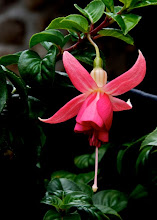The potato (Solanum tuberosum), a tuber that originated in the upper part of the Andes in Peru, has served as a foodstuff for humans in the last 8,000 years. However, it was not until the Spanish took samples of the potato to Europe in the sixteenth century that it became a universal food. In fact, less than a century after the potato was brought to the Old World, it turned for mass consumption, and during the industrial revolution proved to be a key energy source for the working class. Today, the potato is a very important source of protein and starch for vegetarians and vegans.
 According to ancient legend, when the mythical founders of the Inca Empire, in old Peru, Manco Capac and Mama Ocllo, emerged from the cold waters of Lake Titicaca, the first thing that God taught them was to plant potatoes. Possibly due to this ancient origin, farmers in the Andes have developed a number of varieties that have adapted to all climates. Today, scientists have identified more than 4,000 potato varieties, many of which, as the yellow potato (papa or pope huayra yellow) are found only in Peru. In fact, Peruvian potatoes are considered unmatched in flavor and texture. The mighty Inca culture revered the potato not only as a staple food but as an icon. Vegetarians and vegans who travel to Peru delight themselves in many delicious dishes based on several varieties of potatoes, including the famous “yellow potato” or “papa amarilla”.
According to ancient legend, when the mythical founders of the Inca Empire, in old Peru, Manco Capac and Mama Ocllo, emerged from the cold waters of Lake Titicaca, the first thing that God taught them was to plant potatoes. Possibly due to this ancient origin, farmers in the Andes have developed a number of varieties that have adapted to all climates. Today, scientists have identified more than 4,000 potato varieties, many of which, as the yellow potato (papa or pope huayra yellow) are found only in Peru. In fact, Peruvian potatoes are considered unmatched in flavor and texture. The mighty Inca culture revered the potato not only as a staple food but as an icon. Vegetarians and vegans who travel to Peru delight themselves in many delicious dishes based on several varieties of potatoes, including the famous “yellow potato” or “papa amarilla”. The annual diet of an average global citizen in the first decade of the twenty-first century include about 33 kg of potatoes. However, the local importance of the potato is rapidly increasing. It remains an essential crop in Europe (especially in Central and Eastern Europe), where output per capita is still the highest in the world. However, a faster expansion in recent decades has occurred in South and East Asia. China is now the world's largest potato producing country, and nearly a third of the world's potatoes are harvested in China and India. In general, the potato production has shifted away from richer countries to low-income areas of the world.
The annual diet of an average global citizen in the first decade of the twenty-first century include about 33 kg of potatoes. However, the local importance of the potato is rapidly increasing. It remains an essential crop in Europe (especially in Central and Eastern Europe), where output per capita is still the highest in the world. However, a faster expansion in recent decades has occurred in South and East Asia. China is now the world's largest potato producing country, and nearly a third of the world's potatoes are harvested in China and India. In general, the potato production has shifted away from richer countries to low-income areas of the world.In the famous tourist destinations of Cusco, Machu Picchu, Lake Titicaca, La Paz and Quito many restaurants offer wonderful recipes of potatoes and corn to vegetarian and vegan visitors who travel to Peru, Ecuador and Bolivia.
For additional information, please contact:
mail: info@veggietours.com
site: http:///www.veggietours.com



